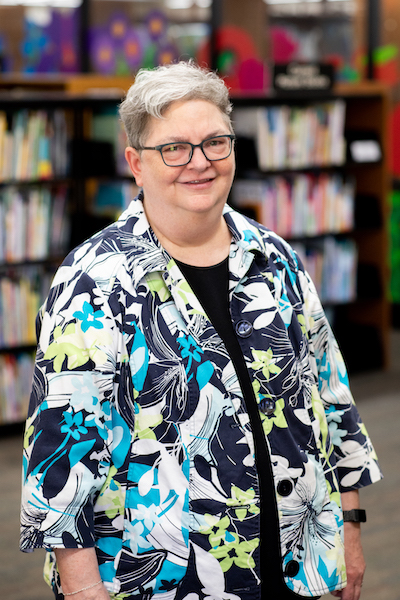The New Yorker utilized the expertise of UW–Madison’s KT Horning, director emerita of the School of Education’s Cooperative Children’s Book Center, for a recent article exploring how children’s books with gay- or queer-centered themes have evolved through the years.

The article, headlined “What Should a Queer Children’s Book Do?” also discusses how this burgeoning genre is being threatened across the country by legislation — such as Florida’s Parental Rights in Education bill, popularly known as the “Don’t Say Gay” law — that limits discussion about gender identity and sexual orientation in the classroom.
Horning speaks with The New Yorker about the time — at the turn of the nineties — when gay-themed children’s books first got widespread attention. This was when the LGBT-focused Alyson Publications published titles such as “Heather Has Two Mommies” and “Daddy’s Roommate.”
“These were stiff, earnest books, lacking for drama or wit,” the article explains, and “ ‘Heather’ was improbably dense with text for a book intended for very young readers.” It included, for instance, a detailed explanation of artificial insemination.
Despite this, says Horning, “it was a book that was always stocked in gay bookstores and women’s bookstores.”
“A lot of lesbians bought it as gifts for friends who were having children, or even just bought for themselves, because it was the only time they had ever seen themselves reflected in a children’s book,” she says.
Horning tells the New Yorker that at that time, while she was working as at a public library in Madison, “We did also have lesbian moms and gay dads who were not fans of the Alyson books,” she says. “They felt that they were just too didactic. So we came up with a list of books that didn’t really have gay families, but they did have queer subtexts.”
These included the “Frog and Toad” books, written and illustrated by Arnold Lobel, and “Three Days on a River in a Red Canoe,” written and illustrated by Vera B. Williams, she says.
“That was the hands-down favorite of lesbian families at our library, because they felt it reflected what their family life was actually like,” Horning says of “Red Canoe.” “They were not sitting down with their children and giving them long explanations of artificial insemination. The book had a great story, adventure, engaging illustrations, and kids being kids.”
It also had a “freewheeling approach to format,” she says, including “colored-pencil drawings and text mingled with recipes, diagrams, and instructions for tying knots or pitching a tent.”
To learn more, check out the full story at newyorker.com.








